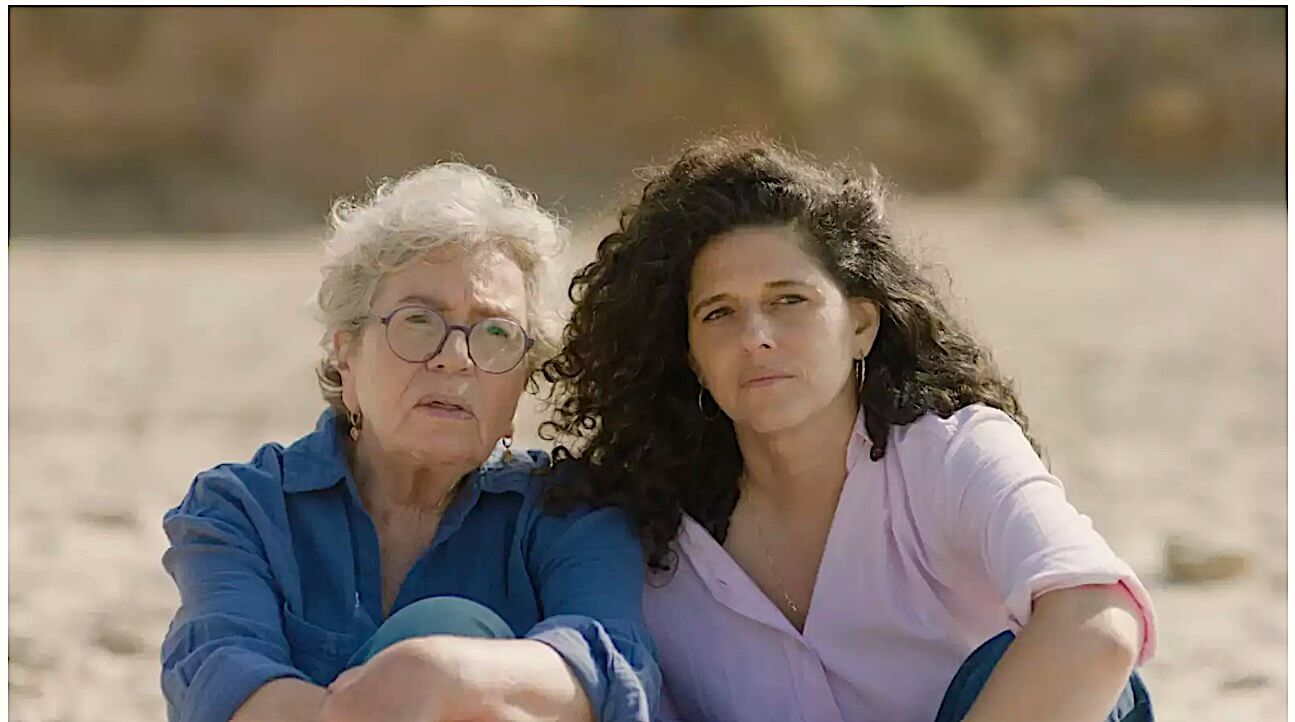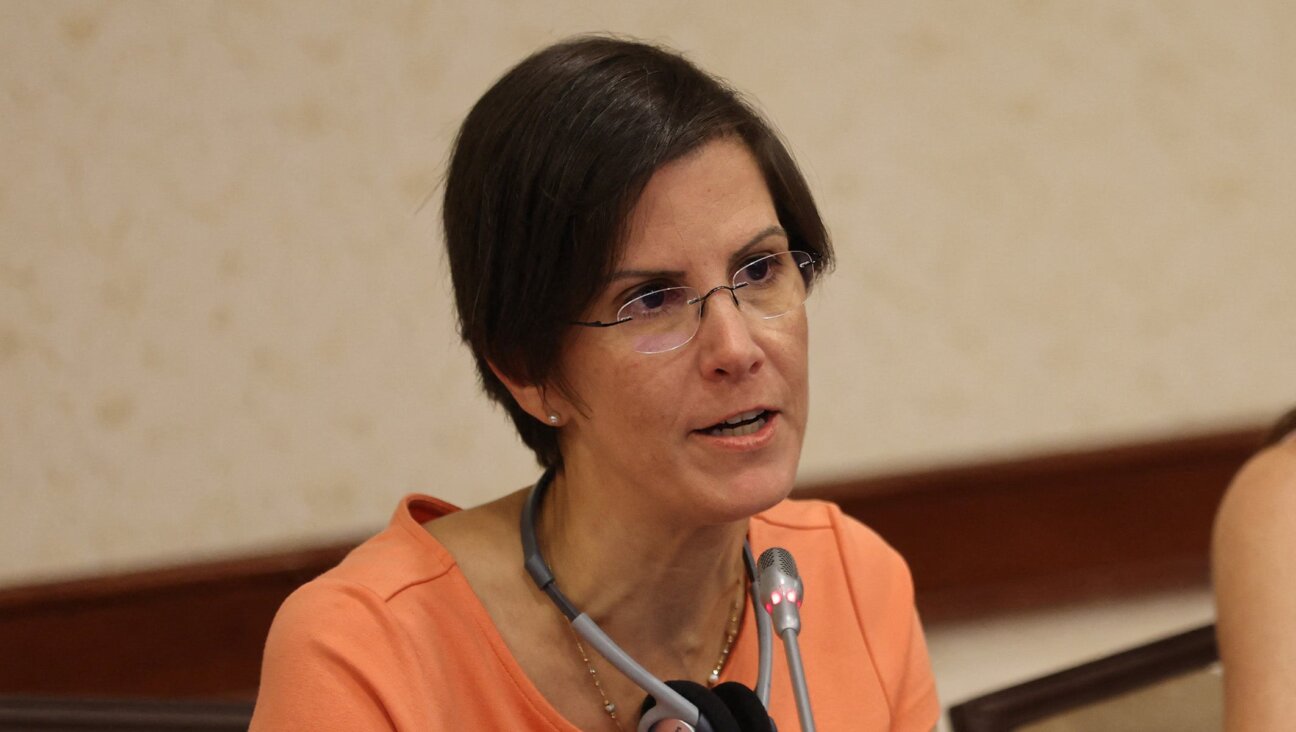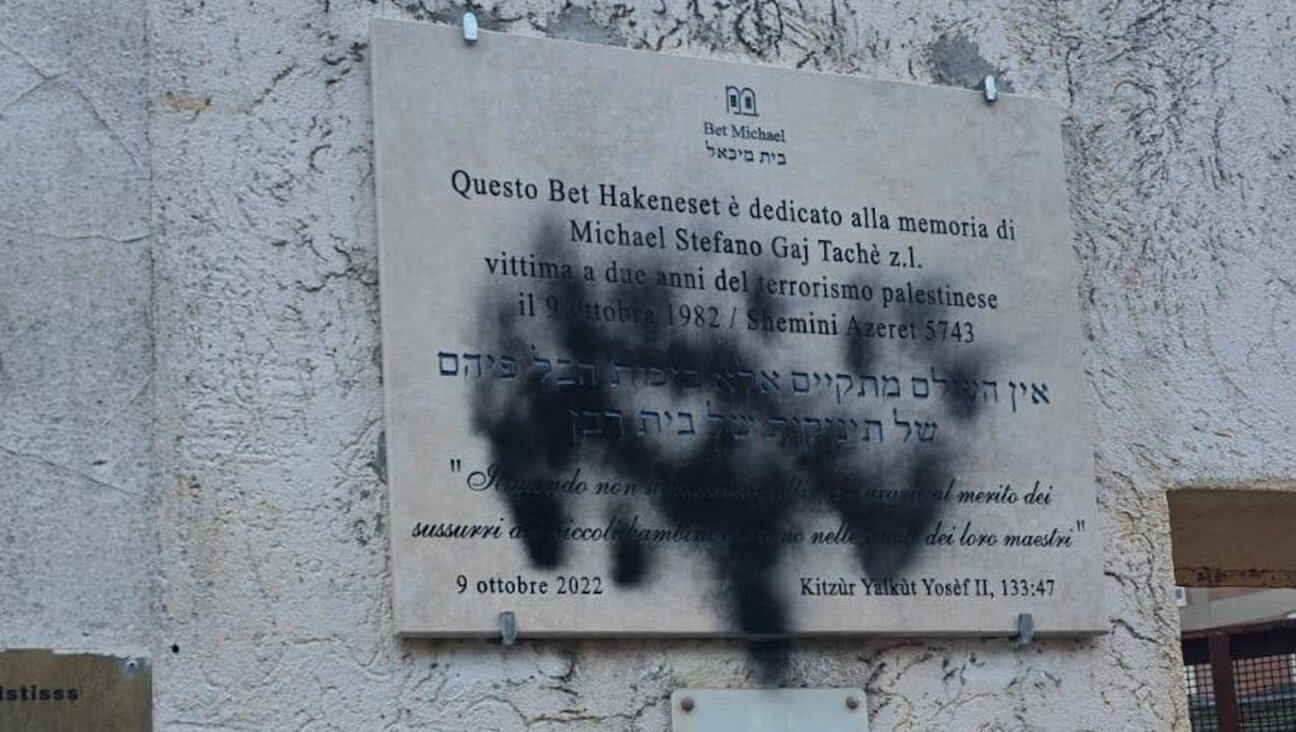Kasztner: Hero or Devil?

Graphic by Angelie Zaslavsky
Gaylen Ross’s splendid new documentary, “Killing Kasztner,” comes at a time when a new generation of Israelis is rediscovering a forgotten conflict, one that threatened to tear apart Israeli society in the 1950s. Until recently Rudolf Yisrael “Rezso” Kasztner had been the forgotten person in Israel. An ironic and puzzling situation since in the mid 1950s, the “Affaire Kasztner” was the flashpoint in Israel. It was an event that split Israeli society more deeply than even the Lavon Affair.
The idea that any Israeli, to say nothing of a highly placed Jewish Agency and later Mapai party and government official, could deal with the SS during the Second World War — in effect, collaborate with the Nazi beast — was abominable, obscene, unthinkable.
Yet there were many who thought just that.
Rezso Kasztner, a lawyer and a journalist, was a Zionist functionary associated with the Mapai party of David Ben-Gurion. In Budapest during the war, Kasztner headed up the Zionist Aid and Rescue Committee (Vaada) in Hungary, and it was in that position that he entered into negotiations with Adolf Eichmann and other Nazis to rescue Jews. Kasztner was indeed responsible for a number of rescue operations during the war, many of which involved negotiating with Nazis officials.
In 1953, Kasztner, then in the new State of Israel and working for the ruling Mapai government, was persuaded by party officials to cooperate in a libel suit brought by the Jewish state on his behalf against one Malchiel Grünwald, an old man and gadfly-crackpot pamphleteer who had declared in one of his sheets that Kasztner was a criminal Nazi collaborator: Kasztner had negotiated with the most terrible enemies of the Jews since Amalek; Kasztner had saved a trainload of handpicked Hungarian Jews (including his own family and the future Satmar Rebbe) in return for abandoning to their fate the rest of the Jews of that land; Kasztner had stolen Jewish communal funds, monies that the Jews had paid to him in return for promises to save them.
The trial — the first great Holocaust trial held in Israel — began in early 1954 and lasted for a year; in mid-1955, Tel Aviv District Court Judge Benyamin Halevy ruled against Kasztner, saying that he “sold his soul to the devil.” The verdict was overturned by the Israeli Supreme Court in 1958, but not before Kasztner was assassinated in 1957.
In the Israeli climate of the 1950s, it was impossible for Kasztner to be judged fairly or appropriately. Israelis were simply not ready to accept a concept or model of heroism other than that of g’vurah (heroism out of strength and courage) — according to the partisan or the Warsaw Ghetto models where Jews fought. They either took up arms against the Nazis and died heroically, ran to the forests and resisted heroically or were not heroic. Jews would not go quietly to their deaths.
The 1950s was too early to entertain an alternate model of Jewish heroism. The Hashomer Hatzair and Achdut HaAvoda parties pioneered the model of the “New Israeli Man” and g’vurah; the Ben-Gurion party was in this camp, too, albeit to a lesser degree. Holocaust victims (“sheep to the slaughter”) — and by extension, survivors (“collaborators”) — were viewed for the most part askance, indeed with an attitude close to contempt; they had collaborated in their own deaths.
The trial, which evoked the most awful images of Jewish collaboration, took place in this atmosphere. The trial of Grünwald became a trial of Kasztner; the trial of Kasztner, stoked by enemies of Mapai and Ben-Gurion, became a trial of Mapai; ultimately, the trial of Mapai became a trial of the victims — and survivors — of the Holocaust itself. The Herut party on the right, with Grünwald lawyer Shmuel Tamir as mouthpiece, joined forces with Uri Avneri’s widely read and influential magazine, Haolam Hazeh, on the left, in attacking Kasztner. While there were vast differences, politically and socially, between the two, Herut and Avneri had a common mission and goal: to topple the Mapai party. Contributing to the climate of hysteria was the non-fiction “Perfidy” (1961), an ill-conceived and irresponsible anti-Kasztner book by American playwright Ben Hecht that was widely read in the United States.
Thus the rhetoric: Tamir and Avneri sanctimoniously charged that Ben-Gurion and Mapai were nothing better than collaborationists during the war, with Kasztner as their more-than-willing tool; Mapai and the Jewish Agency cooperated with the British — they were no better than the Nazis; Mapai, in effect, hid the truth about the Holocaust from the Palestine Yishuv; Mapai was now no better in leading the new state. The trial exacerbated these emotions and aroused enmities more dramatic than any that had been evinced in Israel since its independence. Indeed, even to the present day, these enmities had a lasting effect on Israeli society. It took more than 20 years for Israel to understand what Kasztner did and what he accomplished — and even today there are many in Israel and the Diaspora who view Kasztner as a villain or worse.
In recent years there has been a renewal of interest in Kasztner the person and in his case. A new generation in Israel, not beset with the tensions and angsts of the 1950s, is looking at the Holocaust — and by extension, at Kasztner — without the g’vurah/“sheep-to-slaughter” binary paradigm. Journalist and pol Tommy Lapid was one of the first to write in the early 1980s about Kasztner, and was a voice in changing the Kasztner image into a positive one. In 1982, Yehuda Kaveh’s path-finding documentary on Kasztner was screened. But it was in 1985 that Motti Lerner’s explosive play, “Kasztner,” which premiered at Tel Aviv’s Cameri Theatre, properly reintroduced the country to the controversy. The play asserted that Kasztner had been railroaded by the press and by the court; he was not a villain, the play argued, but a hero who had saved Jews. “Kasztner” had a wide audience and an even wider readership, and an Israeli public began educating itself again about the nuances of the case.
Now arrives Ross’s “Killing Kasztner,” skillfully using archival materials together with penetrating interviews of the Kasztner family (and, remarkably, with Kasztner’s assassin) to flesh out the record. The film’s verdict joins the consensus of historians: Kasztner, far from being a villain, was a hero. He saved Jews, thousands of them.
Questions remain. How many Jews did Kasztner in fact save? Was it just the 1,685 souls on the “Kasztner train”? Yehuda Bauer and other authoritative historians of the Holocaust suggest that the number saved may have been close to 20,000, including numerous families, elderly people and children who were, as result of Kasztner’s negotiations, assigned to labor camps — unheard of in a time when it was Nazi policy to place only able-bodied men in labor camps and to liquidate all others.
The bottom line on the “Affaire Kasztner”: The Kasztner trial became a central issue because it was the first time a large number of Israelis lost confidence in the Mapai party, the very locus of power — in effect, in the Israeli establishment. Contemporary parallels are not hard to find.
Jerome A. Chanes is the author of the award-winning “A Dark Side of History: Antisemitism through the Ages” and the forthcoming “The Future of American Judaism” (Columbia University Press).
“Killing Kasztner” opens October 23 at New York’s Cinema Village.















